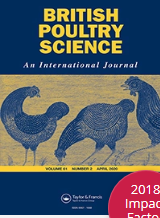Document type: scientific journal available online before publication in British Poultry Science
Authors: R. Mishra, B. Mishra, Y. S. Kim, R. Jha
Preview: 1. Moulting is a natural physiological process in birds when they shed their old feathers and replace them with new ones, and it is followed by reproductive quiescence resulting in reduced egg production. Different birds undergo moulting at different points in their life. Some birds have seasonal moulting while some moult at the end of their breeding cycle. This review will mainly focus on moulting practices associated with commercial layer birds because, in all other bird types, this is not managed. 2. Commercial farms commonly analyse the cost-benefit ratio to decide the time and method to adopt for moulting. Commercial layer farms adopt different practices to force birds out of moult and restart the production cycle. Animal welfare groups consider this as stressful and against animal welfare, raising questions about the ethics of this practice. 3. Many studies have been conducted using complete or partial feed withdrawal and non-feed withdrawal programs to measure their effectiveness in maintaining animal welfare, economy, and post-moult performance in mind. 4. Animal welfare should not be compromised during moulting. The United States Egg Producers and other such groups from the United Kingdom and Europe have decided to sell eggs produced only through a non-feed withdrawal moulting programs.






